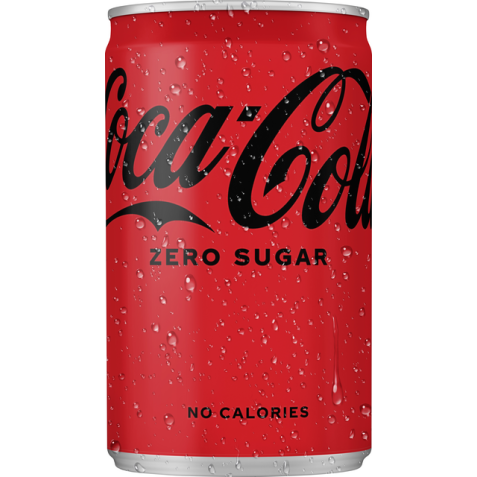We always expect you to check yourself on official pages from the manufacturer
Coca-Cola Zero

Ingredients:
- Carbonated Water
- Colour (Caramel E150d)
- Phosphoric Acid
- Sweeteners (Aspartame
- Acesulfame-K
- Enzymatically Produced Steviol Glycosides)
- Natural Flavourings (including Caffeine)
- Acidity Regulator (Sodium Citrates)
Nutritional Information (per 100ml):
- Energy: 1.3 kJ / 0.3 kcal
- Fat: 0g
- Carbohydrates: 0g
- Protein: 0g
- Salt: 0.005g
Allergens
- Contains a source of phenylalanine due to aspartame. Which is important for people with phenylketonuria (PKU)
Alcohol:
0.00%
History:
Coca-Cola Zero was first introduced in 2005 as a new sugar-free alternative to the original Coca-Cola. Unlike Diet Coke, which was launched in 1982 and has its own distinct flavor, Coca-Cola Zero was designed to taste more like the original Coca-Cola while having zero sugar and zero calories. The goal was to appeal especially to younger consumers, particularly men, who wanted a no-sugar drink but were less interested in Diet Coke's branding.
The original launch used bold black packaging to set it apart from the silver of Diet Coke and the red of regular Coca-Cola. Its slogan, "Great taste, zero sugar," emphasized that it was a closer-tasting alternative to the original Coca-Cola than Diet Coke ever was. The drink quickly gained popularity around the world and became one of Coca-Cola’s most successful product launches in recent decades.
Over the years, Coca-Cola experimented with various flavors under the Coca-Cola Zero label, including Cherry, Vanilla, and Orange Vanilla. In 2017, Coca-Cola Zero was reformulated and rebranded as Coca-Cola Zero Sugar in many markets. The company claimed the change improved the taste even further to bring it closer to the classic Coke experience. Some fans were skeptical at first, but the drink retained a strong following.
The rebrand also came with updated packaging that aligned more closely with the original Coca-Cola’s design, using more red and maintaining a sleek modern look. Coca-Cola Zero Sugar has since become a key part of Coca-Cola’s strategy to offer more low- and no-calorie options as consumer preferences shift away from sugary drinks.
Today, Coca-Cola Zero Sugar is sold in over 100 countries and continues to grow in popularity. It is marketed as a drink that delivers the Coca-Cola taste without the sugar, targeting health-conscious consumers who still want the classic Coke flavor.
Manufacturer:
The Coca-Cola Company
Country Of Manufacturer:
United States Of America
Year (Not always exact year):
2005